“The significance of investment casting lies in its ability to produce complex shapes and detailed parts with a finish. It minimizes the need for machining, bridging the gap between design complexity and manufacturing capability.”
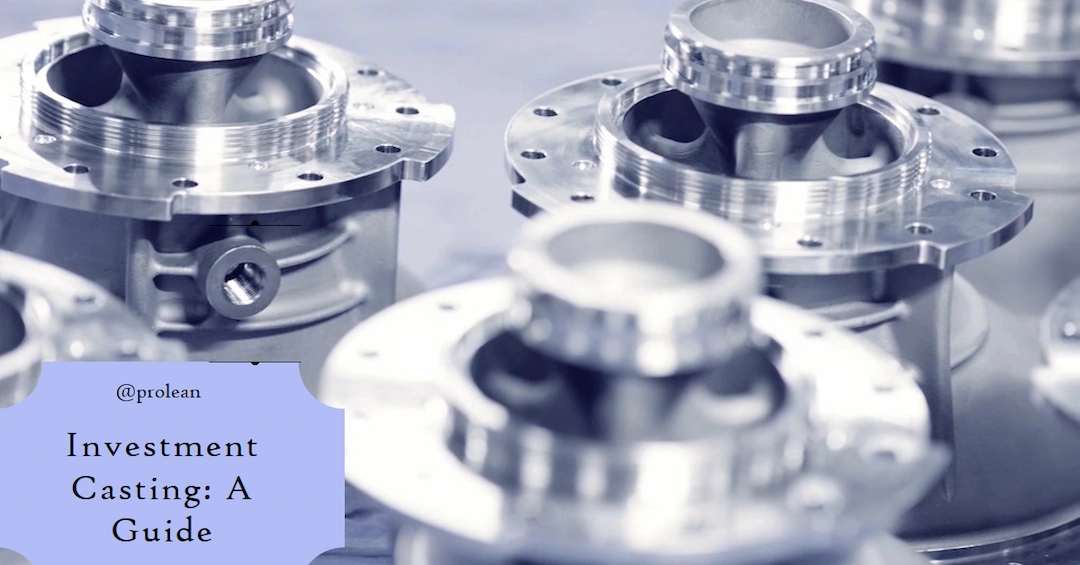
Among the different casting methods, investment casting stands out for its ability to produce precision cast parts with exceptional precision cast parts. But, what is investment casting? It is a manufacturing process that involves creating a wax pattern of the desired part, encasing it in a ceramic mold. Then, melt out the wax to pour molten metal into the cavity. After the liquid metal solidifies the ceramic shell is removed to show the final product. The casting process, also known as lost wax casting can produce complex shapes with minimal additional machining.
In this article, we will discuss investment casting process in detail. It will cover the working process, suitable metals, pros & cons, applications, etc. Additionally, we will discuss rapid prototype investment casting and how companies like Proleantech deliver cost-effective solutions for metal casting.
What is Investment Casting? Definition
Investment casting also known as lost-wax casting or precision investment casting is a manufacturing process that produces metal parts with exceptional precision and detail. The process begins with creating a wax mold or pattern wax which is an exact replica of the desired cast part. Once the cermaic mold shell hardens, the wax is melted out leaving a mold cavity for pouring the molten metal. After the metal solidifies, the refractory material is broken away to reveal the precision metal component.

Investment casting
The investment casting method can work with different metals, including stainless steel, aluminum, carbon steel, low alloy steel, titanium and non-ferrous metals. It makes casting suitable for industries such as aerospace, automotive, and medical devices. Furthermore, investment casting is known for its ability to create near net shape parts that require minimal machining.
Moreover, it is the method of choice for small to medium-sized components for applications where the material’s properties, such as strength and corrosion resistance, are critical.
Related: What is Die Casting? Die Casting Process and Overview
How does Investment Casting Process work?
The investment casting process is a casting manufacturing technique that can create complex shapes in metal components. The process begins with a wax injection. A master die is used to produce a wax pattern that is a replica of the desired part. This model is attached to a wax sprue, forming a tree-like assembly. Then, the assembly is dipped into a ceramic slurry, coated with fine sand, and left to harden. The multiple repetitions of this step build a thick ceramic shell around the wax models.
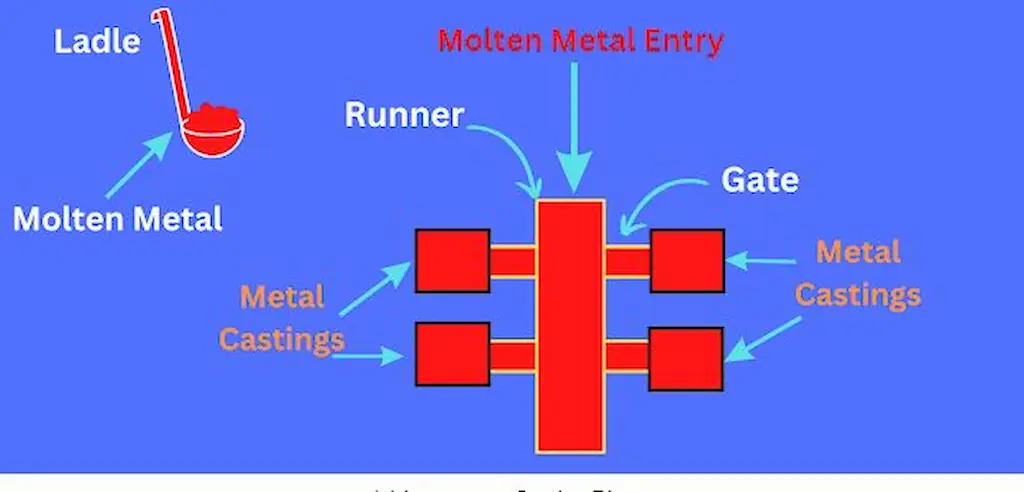 Investment casting process
Investment casting process
Once the ceramic mold shell has dried and hardened, it is heated to melt and burn out the wax, leaving behind a hollow cavity in the shape of the parts. The lost wax process ensures the mold material can withstand the high temperatures of molteen metal. The high temperature also strengthens the ceramic mold, ensuring it can withstand the stress of the casting process.
After the wax removal, molten metal is poured into the cavity through a gating system that allows it to fill the cavity and solidify into the exact shape of the wax pattern. After cooling the ceramic shell is broken away and the cast parts are separated from the spruce.
Try Prolean Now!
What are the Investment Casting Materials?
Investment casting stands out for its versatility in working with many materials. It can handle metals both ferrous and non-ferrous metals with high melting points which are challenging to machine.
The flexibility allows investment casting companies like Proleantech to meet specific mechanical proeprties and material structure requirements.
Here are the common investment casting metals;
1. Stainless Steel
Stainless Steel Investment Casting is a choice for excellent corrosion resistance, durability, and strength. It is ideal for parts that require long-term reliability in harsh environments. Furthermore, stainless steel’s aesthetic appeal makes it suitable for consumer goods. This material adapts well to the investment casting process, allowing for parts with complex shapes without sacrificing mechanical properties.
2. Aluminum Alloys
Aluminum alloys like A356 investment casting, are favored for their lightweight properties, corrosion resistance and machinability. They are non-ferrous metal alloys that are commonly used in aluminum investment casting companies for automotive, aerospace and electronic industries.
3. Titanium
Titanium investment casting is renowned for its strength-to-weight ratio, corrosion resistance, and ability to withstand extreme temperatures. These characteristics make it an ideal material for aerospace investment casting and turbine blades, medical, and military applications. Next, investment casting companies can produce titanium parts with precise dimensions and complex geometries.
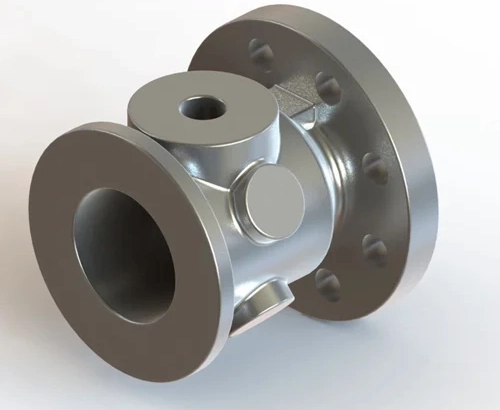
Titanium investment casting part
4. Cobalt Alloys
These materials are known for their wear resistance, high-temperature stability, and corrosion resistance. Therefore, they are suitable for investment casting parts used in harsh environments. Meanwhile, these alloys are common in the medical & surgical instruments, aerospace, and automotive industries.
5. Nickel Alloys
Alloy investment casting with nickel alloys like Inconel 625 investment casting or Inconel 718 provides high temrperature resistance and corrosion resistance. For example, chemical processing and energy sectors. Investment casting of nickel alloys enables the creation of parts with complex shapes and detailed features, meeting the stringent requirements of industrial applications.
6. Copper Alloys
Mainly bronze and brass are selected for investment casting because of their excellent electrical conductivity, thermal conductivity, and corrosion resistance. These materials are ideal for creating decorative items, electrical components, and marine hardware.
7. Precious Metals
Precious metals like gold, silver, and platinum are also compatible with investment casting for jewelry, art, and dental applications. Investment casting allows for the detailed and intricate designs characteristic of these fields.
Pros of Investment Casting
- High-Dimensional Accuracy and Surface Finish: Investment casting produces precision cast parts with excellent dimensional accuracy and smooth surface finishes, reducing the need for secondary machining.
- Complex Geometries: It allows for components with intricate shapes and details that would be difficult or impossible to achieve with other methods like die casting and sand casting.
- Versatile Material Options: Versatility in metal choices brings flexibility in material selection to meet specific application requirements.
- Reduced Waste: The precision of the process results in minimal material waste. So, it is more efficient and cost-effective for detailed parts.
- Tooling Longevity: The ceramic molds used in investment casting can produce many parts before requiring replacement.
Cons of Investment Casting
- Higher Cost for Low Volume Production: Initial setup and tooling costs can be high. Therefore, it is less cost-effective for very small production runs.
- Longer Production Time: The multi-step process of creating wax patterns, ceramic molds, and casting can lead to longer lead times than other methods like high-pressure die casting.
- Size Limitations: While investment casting is excellent for small to medium-sized parts, it may not be suitable for very-large components.
Rapid Prototype Investment Casting
This investment casting approach allows engineers and designers to create prototypes within days. So, it significantly accelerates the development cycle of parts or products.
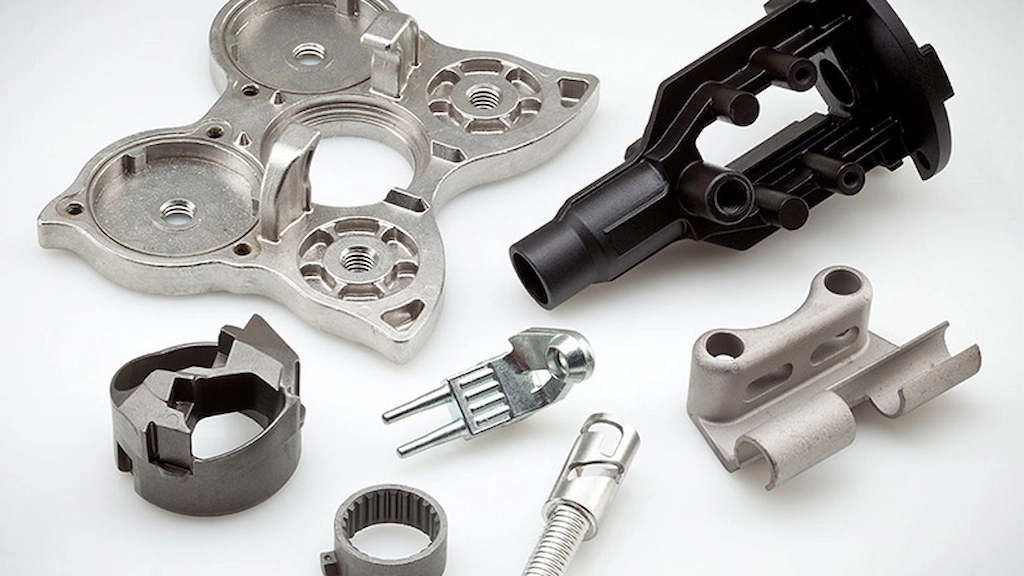
Investment casting prototypes
In Rapid prototype investment casting, 3D-printed wax patterns or resin patterns replace the need for tooling, facilitating quick iterations and modifications based on testing feedback. As a result, this adaptability makes it an ideal choice for industries aiming to innovate rapidly and reduce the time to market for new products.
- Digital to Physical Transition: 3D printing converts a CAD into a physical pattern, eliminating traditional mold-making steps.
- Complex Designs Made Possible: You can experiment with intricate details and complex geometries. So, it makes you free from conventional tooling limitations.
- Streamlines Prototyping: Rapid prototype investment casting accelerates rapid prototyping.
- Cost Reduction: Significantly lowers development costs by reducing waste and eliminating the need for expensive tooling.
Try Prolean Now!
What are the Investment Casting Applications?
The investment casting process excels in industries requiring precision metal components with complex shapes and high mechanical properties. Below are key applications:
Aerospace Parts
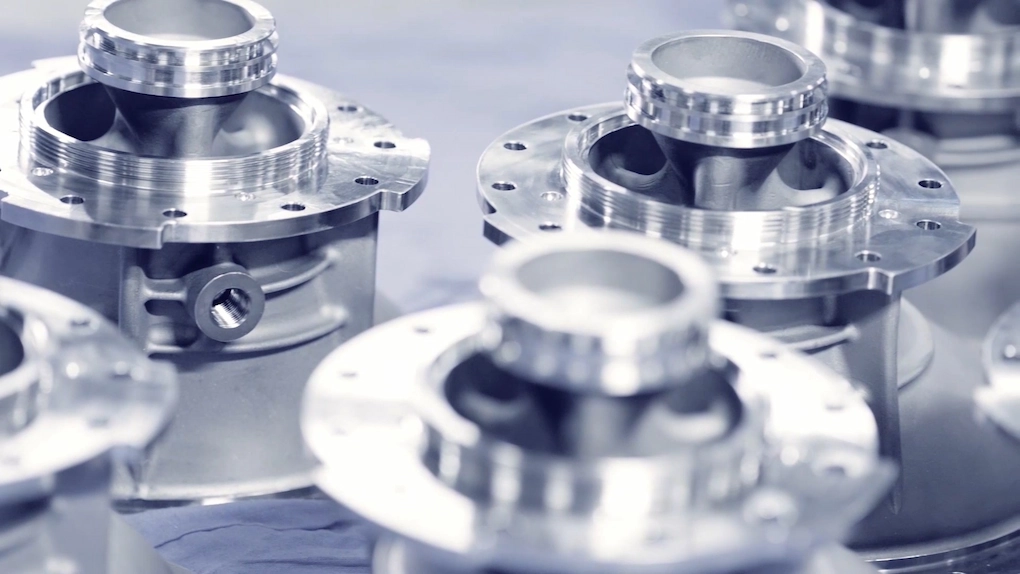
Investment casting aerospace parts
Aerospace investment casting companies use investment casting to produce parts with high strength-to-weight ratios and durability. Some investment casting aerospace applications are turbine blades, engine components, and airframe structural parts. Subsequently, these casting components can withstand extreme temperatures and stresses.
Medical Devices and Instruments
The medical industry benefits from investment casting to manufacture surgical instruments, implants, and device components. It allows for parts with complex shapes and smooth surfaces required in medical applications. Meanwhile, you can choose materials like titanium and stainless steel due to their biocompatibility and strength.
Automotive Components
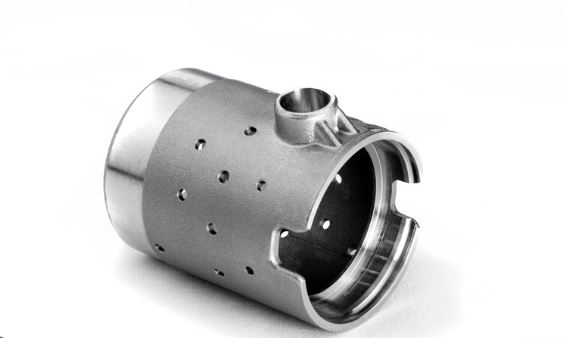
Investment cast automotive part
Investment casting automotive parts, including engine and transmission components use precision investment casting. It is popular in high-performance and luxury vehicles. This method can cast engine parts, transmission components, and structural elements. Meanwhile, precision engineering for automotive casting ensures optimal performance and reliability. Overall, investment casting enables the production of lightweight designs that contribute to improved fuel efficiency and vehicle dynamics.
Jewelry
The jewelry industry relies on lost wax investment casting to reproduce intricate designs with exceptional detail and surface finish. Precious metals like gold, silver, and platinum are cast into exquisite pieces that highlight the craftsmanship and artistry of designers. Moreover, investment casting accommodates the delicate features and complex patterns in jewelry.
Energy Sector
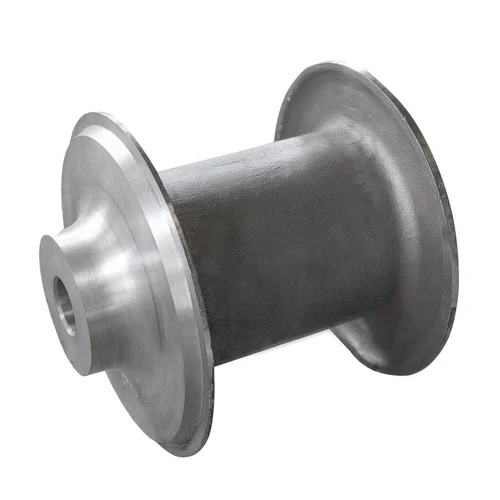
Investment casting for the oil & gas industry
For the energy sector, investment casting produces components for power generation equipment, including turbines and generators. These parts must endure harsh conditions and high stress, necessitating the use of materials that can withstand such environments. The process’s precision and ability to work with high-performance alloys make it a go-to choice for creating durable, efficient components for renewable and non-renewable energy sources.
Defense and Military Applications
The defense industry employs investment casting to fabricate parts for firearms, vehicular components, and aerospace defense systems. It addresses the need for parts that can perform reliably under extreme conditions. Meanwhile, investment casting enables the production of components with the strength, precision, and durability required for military applications.
What is Large Investment Castings?
This investment casting variation is for large and complex components. It accommodates sizable parts for industries like aerospace, where large structural components and engine parts. Here, the ability to produce large, intricate shapes with high dimensional accuracy of investment casting ensures that even the most challenging designs are feasible, merging strength with complexity.
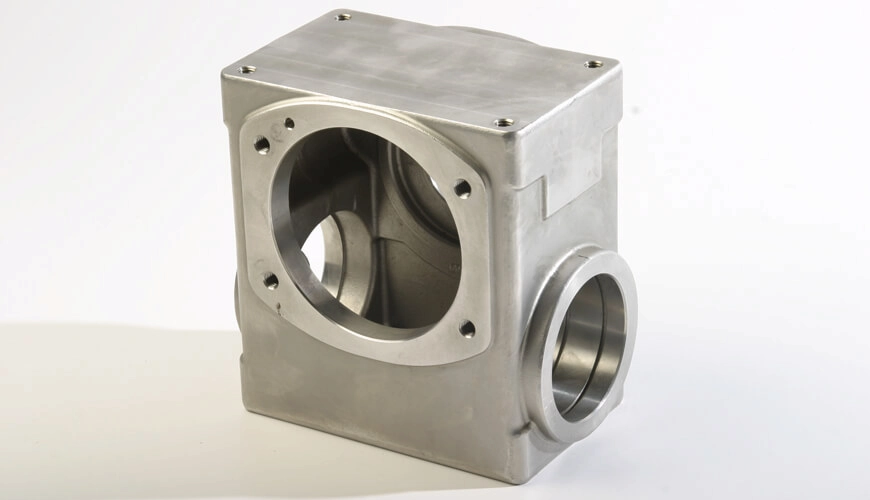
Large investment casting
The process for large investment castings involves specialized equipment and techniques to manage the increased scale and weight of the molds and the molten material.
- Careful attention to detail is essential in preparing the wax models
- Coat wax models with refractory materials
- Control the metal pouring process to avoid defects.
- The scale of these operations necessitates rigorous quality control.
Furthermore, energy, marine, and heavy machinery industries benefit significantly from large investment castings. These sectors often require components that combine durability with detailed features. Here, the adaptability of investment casting to various alloys means custom parts that meet specific environmental and mechanical demands.
Read more: Gravity Die Casting: Overview, Process, and Applications
Cast Your Metal Parts at Prolean: Precision at Low Cost
At Prolean, we specialize in transforming your concepts into high-quality metal parts through our advanced casting services. Our expertise spans various casting methods, including investment casting, die casting, vacuum casting, and sand casting, to cater to diverse industry needs.
Our casting engineers leverage advanced technologies and manufacturing facilities to ensure that each part we produce meets stringent quality standards. Meanwhile, we have a separate team to work closely with clients. As a result, we can understand your specific requirements and cast the part accordingly.
We handle projects of any scale, from small, intricate components to large, complex assemblies. Next, our rigorous quality control process ensures that every part that leaves our facility has been thoroughly inspected and meets all specifications. Choosing Prolean for your metal casting needs means partnering with a team committed to excellence and innovation.
Try Prolean Now!
Summing Up
Overall, investment casting is a wise manufacturing option for producing high-precision, detailed parts across several industries. It allows components with complex geometries that other methods cannot achieve, making it ideal for customized or intricate designs. However, some considerations are essential to achieve quality investment casting parts. A well-designed plan can only accommodate the process’s unique requirements, including allowances for shrinkage and the creation of molds.
Finally, understanding what is investment casting is the first step toward leveraging its full potential in manufacturing. It involves a detailed process, from creating a wax model to casting metal in the created mold, requiring specialized knowledge and equipment.
FAQs
What do you mean by investment casting?
Investment casting, also known as lost-wax casting, is a precision casting process for creating intricate and detailed metal parts by using a wax model, coating it in a ceramic slurry, melting out the wax, and pouring metal into the cavity.
Are investment casting parts durable?
Yes, investment casting parts are durable. The process allows for the use of high-strength alloys, ensuring the produced components possess excellent mechanical properties and longevity, suitable for demanding applications.
Which materials are suitable for investment casting?
Several materials are compatible with investment casting, including stainless steel, aluminum, titanium, and various alloys.
Is investment casting expensive?
Investment casting can be more expensive than other casting methods due to its intricate process and the materials used. However, its ability to produce complex shapes with minimal machining often results in overall cost savings for detailed parts.
What is the difference between die casting and investment casting?
Die casting involves forcing molten metal into molds under high pressure and is suitable for the high-volume production of parts with thinner walls and less complexity. Investment casting is better for creating intricate, detailed parts with superior surface finishes and allows for a broader selection of materials.
Resources
- Poli, C. (2001). Metal Casting Processes. In Design for Manufacturing: A Structured Approach (pp. 115-126). https://doi.org/10.1016/B978-075067341-9.50010-0
- Bralla, J. G. (1999). Design for Manufacturability Handbook (2nd ed.). The McGraw-Hill Companies, Inc. ISBN: 9780070071391. https://www.accessengineeringlibrary.com/content/book/9780070071391/chapter/chapter53




DO you assists in importing investment casting equipments?
We provides comprehensive Investment casting services, including the mold making with CNC and EDM, related tooling manufacturing, and prototyping to full scale production of investment casting parts or products.